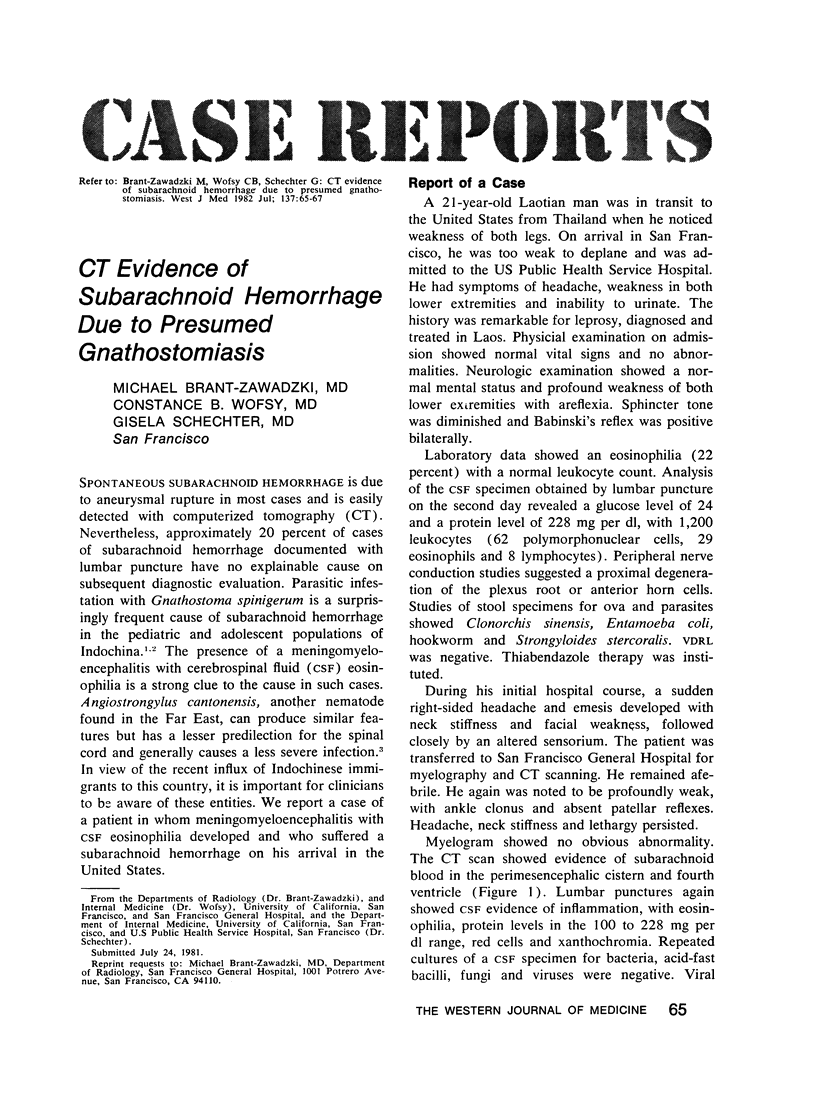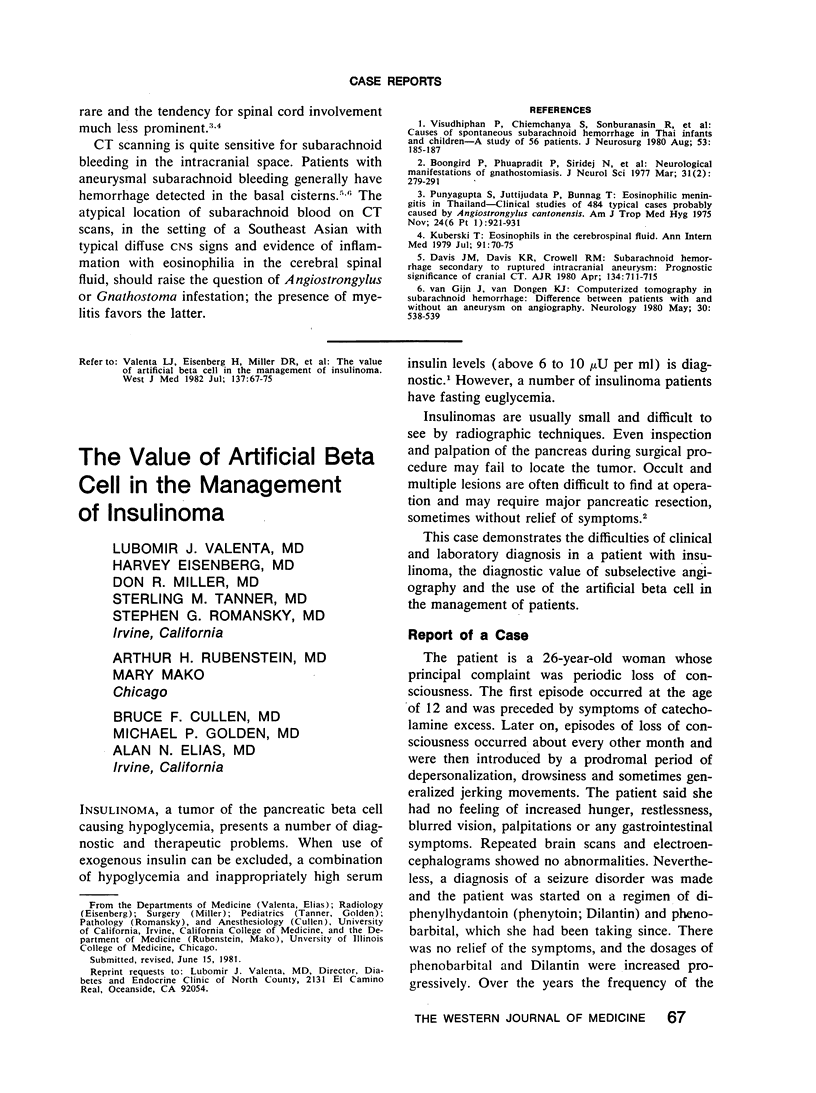Full text
PDF


Images in this article
Selected References
These references are in PubMed. This may not be the complete list of references from this article.
- Boongird P., Phuapradit P., Siridej N., Chirachariyavej T., Chuahirun S., Vejjajiva A. Neurological manifestations of gnathostomiasis. J Neurol Sci. 1977 Mar;31(2):279–291. doi: 10.1016/0022-510x(77)90113-7. [DOI] [PubMed] [Google Scholar]
- Davis J. M., Davis K. R., Crowell R. M. Subarachnoid hemorrhage secondary to ruptured intracranial aneurysm: prognostic significance of cranial CT. AJR Am J Roentgenol. 1980 Apr;134(4):711–715. doi: 10.2214/ajr.134.4.711. [DOI] [PubMed] [Google Scholar]
- Kuberski T. Eosinophils in the cerebrospinal fluid. Ann Intern Med. 1979 Jul;91(1):70–75. doi: 10.7326/0003-4819-91-1-70. [DOI] [PubMed] [Google Scholar]
- Punyagupta S., Juttijudata P., Bunnag T. Eosinophilic meningitis in Thailand. Clinical studies of 484 typical cases probably caused by Angiostrongylus cantonensis. Am J Trop Med Hyg. 1975 Nov;24(6 Pt 1):921–931. [PubMed] [Google Scholar]
- Visudhiphan P., Chiemchanya S., Somburanasin R., Dheandhanoo D. Causes of spontaneous subarachnoid hemorrhage in Thai infants and children. A study of 56 patients. J Neurosurg. 1980 Aug;53(2):185–187. doi: 10.3171/jns.1980.53.2.0185. [DOI] [PubMed] [Google Scholar]
- van Gijn J., van Dongen K. J. Computerized tomography in subarachnoid hemorrhage: difference between patients with and without an aneurysm on angiography. Neurology. 1980 May;30(5):538–539. doi: 10.1212/wnl.30.5.538. [DOI] [PubMed] [Google Scholar]



